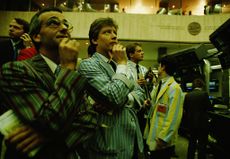Funds
The latest news, updates and opinions on Funds from the expert team here at MoneyWeek
Explore Funds
-

How to profit from the markets’ pessimism about Britain
Opinion There was little in the Budget to prop up Britain's stock market, but opportunities are hiding in plain sight. Investors should take advantage while they can
By Cris Sholto Heaton Published
Opinion -

Rachel Reeves's Autumn Budget: What it means for the UK
Opinion A directionless and floundering government has ducked the hard choices at the Autumn Budget, says Simon Wilson
By Simon Wilson Published
Opinion -

Saba outlines plans for Edinburgh Worldwide
Activist investor Saba Capital has requisitioned a general meeting aimed at replacing Edinburgh Worldwide’s board with three independent directors
By Dan McEvoy Last updated
-

The top funds and stocks to buy according to DIY investors
New data on the top funds, stocks and trusts reveals interest in money market funds has heightened in a bid to reduce risk amid market volatility
By Kalpana Fitzpatrick Last updated
-

Workspace: Profit from a return to the office
Workspace is an unloved play on the real estate investment trust sector as demand for flexible office space rises
By Rupert Hargreaves Published
-

The new frontiers of cybersecurity and how to invest
Matthew Partridge reviews the key trends in the cybersecurity sector and how to profit
By Dr Matthew Partridge Published
-

Investment trust troubles: back to the 1970s for investors?
Opinion Those fearing for the future of investment trusts should remember what happened 50 years ago, says Max King
By Max King Published
Opinion -

No peace dividend in Trump's Russia-Ukraine peace plan
Opinion An end to fighting in Ukraine will hurt defence shares in the short term, but the boom is likely to continue given US isolationism, says Matthew Lynn
By Matthew Lynn Published
Opinion -

How to earn over 4% on your cash… using a stocks and shares ISA
Savers worried about a potential cut to the cash ISA limit in the Autumn Budget could shield their money from the taxman using a money market fund or other assets in a stocks and shares ISA. We explain how
By Ruth Emery Last updated
